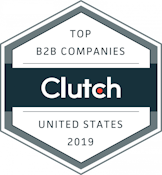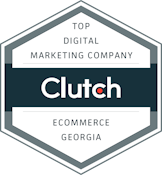Understanding Zero-Party Data in Marketing
Zero-party data refers to information that customers intentionally share with brands, such as preferences, purchase intentions, and personal context. Unlike first-party data collected through behavior or third-party data aggregated externally, zero-party data is explicitly provided by consumers. This direct sharing builds trust and allows marketers to create personalized experiences that genuinely reflect individual desires while respecting privacy.

Brands use interactive tools like quizzes, surveys, and preference centers to invite customers to share their preferences. This approach improves product recommendations and messaging precision, making marketing feel less intrusive and more collaborative. As a result, customer engagement deepens, loyalty strengthens, and conversions increase.
The Role of Zero-Party Data in Privacy-First Marketing
With growing privacy concerns, zero-party data aligns with marketing strategies that prioritize transparency and consent. Customers are more willing to share information when they understand its purpose and see clear benefits, such as personalized content or exclusive offers. This dynamic encourages brands to move away from traditional data collection methods and adopt open communication about data use.
By fostering a mutual exchange of value, brands enhance customer satisfaction and comply with privacy regulations. This trust-based relationship supports ongoing engagement and positions zero-party data as a valuable asset for effective marketing.
Enhancing Product Discovery and Conversion
Zero-party data enables brands to tailor product discovery to individual preferences and intentions. When customers engage with interactive elements, they reveal authentic buying intent, allowing brands to present relevant recommendations rather than broad assumptions. This personalized approach reduces bounce rates and increases average order values.
Examples from companies like Free People, Centrum, and RMS Beauty show how exchanging value—through personalized content or loyalty incentives—encourages customers to share preferences willingly. This feedback loop drives immediate conversions and builds long-term loyalty by making customers feel recognized and rewarded.
Frequently Asked Questions About Zero-Party Data
What distinguishes zero-party data from other data types?
Zero-party data is voluntarily shared by customers, offering a clearer insight into their true preferences and intentions compared to data collected passively or inferred.
How can brands encourage customers to share zero-party data?
Transparency about data use and providing tangible benefits, such as personalized recommendations or exclusive offers, motivate customers to participate. Interactive tools make the process collaborative rather than intrusive.
How does zero-party data relate to privacy regulations?
Since it is shared with explicit consent, zero-party data aligns with privacy-first principles and compliance requirements. Clear communication about data usage fosters mutual respect and ongoing engagement.
What impact does zero-party data have on business outcomes?
It enables brands to anticipate customer needs more accurately, leading to more relevant product discovery, higher conversion rates, and stronger long-term relationships.
Conclusion
Zero-party data represents a shift toward marketing that values transparency, consent, and authentic customer connection. By inviting consumers to share their preferences directly, brands can deliver personalized experiences that respect privacy, enhance product discovery, and drive conversions. This approach builds trust and loyalty through a clear exchange of value, offering a responsible and effective way to engage customers in an evolving privacy landscape.
For more insights, read the original article on Search Engine Land. As noted by the author, “Zero-party data empowers brands to create personalized experiences, improve customer engagement, and drive conversions through targeted marketing and informed product development.”













.png)

